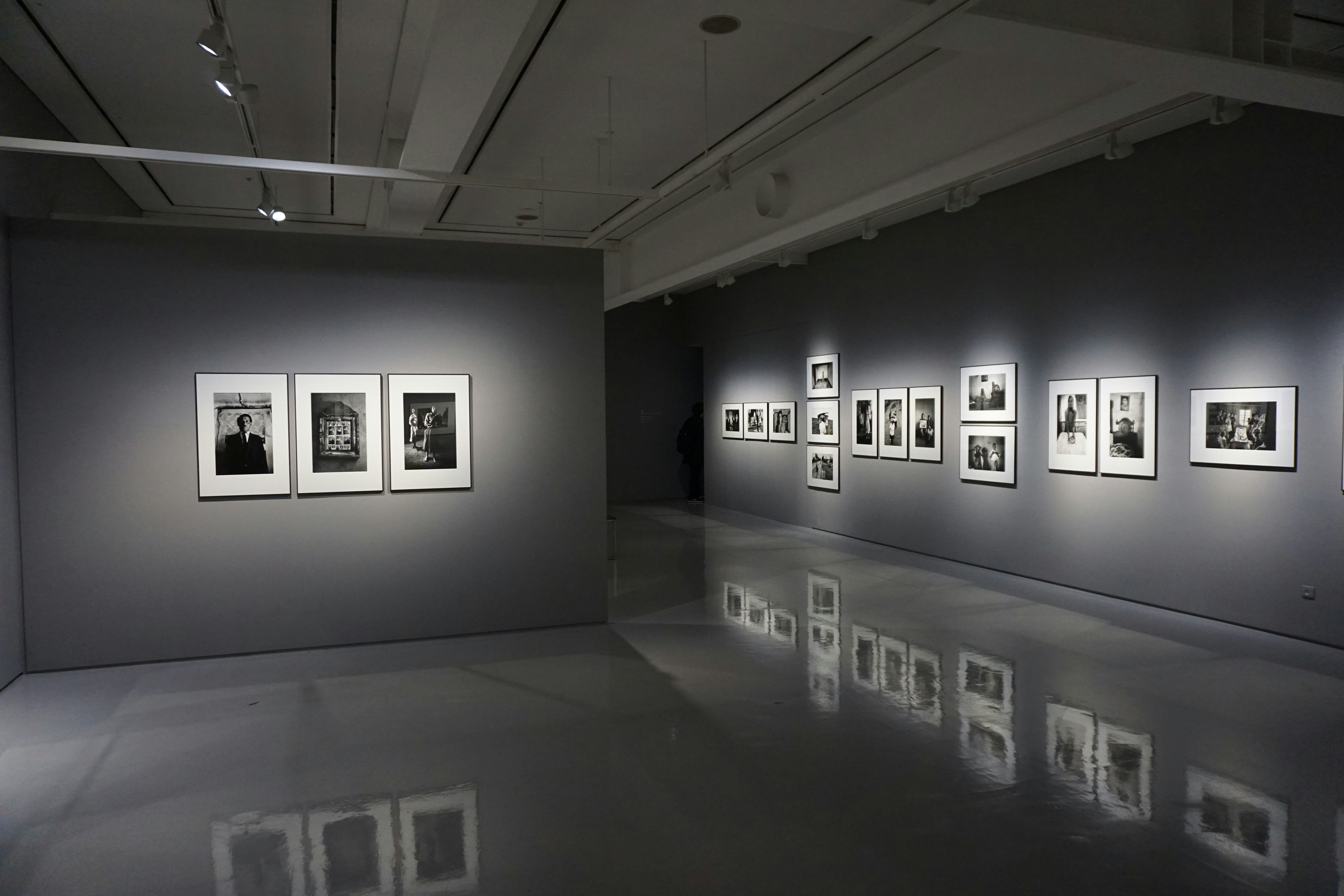Global Cinema Appreciation: Understanding Film Beyond Hollywood
Malik Mohsin Saleem Khan
January 18, 2024 · 16 min read

Introduction
In an increasingly interconnected world, global cinema offers more than entertainment—it provides unique windows into diverse cultures, perspectives, and human experiences that might otherwise remain inaccessible. Beyond the familiar Hollywood productions that dominate mainstream viewing, a rich tapestry of filmmaking traditions exists across continents, each with distinctive storytelling approaches, visual languages, and cultural contexts that can profoundly expand our understanding of both cinema and the world.
This comprehensive guide explores the rewards and approaches to appreciating global cinema, from landmark film movements that revolutionized the art form to contemporary directors creating groundbreaking work outside the American studio system. Whether you're a casual viewer looking to broaden your cinematic horizons or a dedicated film enthusiast seeking deeper understanding of world cinema traditions, this exploration offers pathways to more meaningful engagement with the global language of film.
The Evolution and Significance of Global Cinema
While Hollywood has dominated global film distribution and popular consciousness, cinema has always been an international art form with multiple centers of innovation and excellence. Understanding this broader history provides essential context for appreciating the rich diversity of global filmmaking traditions and their ongoing influence.
Cinema's early development occurred simultaneously across multiple countries, with pioneering work emerging from France (the Lumière brothers), Germany (the Skladanowsky brothers), and other nations alongside American innovations. These parallel developments led to distinctive national cinematic languages even in the silent era, with German Expressionism's stylized visuals, Soviet montage theory's revolutionary editing approaches, and French Impressionism's subjective storytelling techniques all emerging as influential movements that continue to shape filmmaking worldwide.
The post-World War II period witnessed an explosion of significant film movements that challenged Hollywood conventions and expanded cinema's artistic possibilities. Italian Neorealism emerged from the rubble of war-torn Italy, using non-professional actors, location shooting, and social realism to depict ordinary lives with unprecedented authenticity. The French New Wave revolutionized film language through jump cuts, handheld camera work, and self-reflexive storytelling that acknowledged cinema's constructed nature. Japanese cinema gained international recognition through masters like Akira Kurosawa and Yasujirō Ozu, whose distinctive approaches to narrative, composition, and temporal flow offered alternatives to Western conventions.
Contemporary global cinema continues this tradition of innovation while reflecting the complex realities of globalization, postcolonial identities, and technological change. Iranian cinema has developed a distinctive poetic realism despite political constraints. South Korean filmmakers have created a powerful synthesis of genre elements and social commentary. African cinema increasingly addresses both continental realities and diasporic experiences. Latin American directors continue strong traditions of political engagement and magical realism. These diverse movements and national cinemas don't exist in isolation but engage in constant dialogue, creating a rich global ecosystem of influence and exchange.
The significance of engaging with this global cinematic heritage extends beyond appreciating artistic diversity. Films offer unique insights into cultural values, historical contexts, and social realities that might otherwise remain inaccessible to outside observers. They can challenge ethnocentric perspectives, reveal universal human experiences across cultural differences, and foster empathy through immersion in unfamiliar worldviews. In an era of global challenges requiring cross-cultural understanding, world cinema provides not just artistic enrichment but a vital form of cultural dialogue.
Essential Global Film Traditions and Movements
Certain film traditions and movements have been particularly influential in shaping cinema's development and continue to offer rich rewards for contemporary viewers. Understanding these key traditions provides entry points into the vast landscape of global cinema.
Italian Neorealism (1944-1952) emerged from the devastation of World War II, with directors like Roberto Rossellini, Vittorio De Sica, and Luchino Visconti creating films that depicted the harsh realities of post-war Italian society. Working with limited resources, these filmmakers shot on location with natural lighting and often cast non-professional actors to achieve unprecedented authenticity. Landmark films like "Rome, Open City" (1945), "Bicycle Thieves" (1948), and "La Terra Trema" (1948) focused on the struggles of ordinary people, particularly the working class, with a compassionate yet unflinching gaze. Neorealism's influence extends far beyond Italy, inspiring social realist traditions worldwide and establishing an ethical approach to representing reality that continues to influence documentary and fiction filmmaking.
The French New Wave (1958-1973) revolutionized cinema through both radical formal innovations and a reconsideration of film's relationship to other arts and society. Directors including François Truffaut, Jean-Luc Godard, Agnès Varda, and Jacques Rivette—many of whom began as critics for Cahiers du Cinéma—rejected the polished "tradition of quality" in French cinema for a more personal, experimental approach. Their films featured location shooting, natural lighting, improvisation, jump cuts, and self-reflexive techniques that called attention to the filmmaking process itself. Essential works like "The 400 Blows" (1959), "Breathless" (1960), and "Cléo from 5 to 7" (1962) broke conventional narrative structures while engaging directly with contemporary social issues and youth culture. The movement's emphasis on directorial vision helped establish the concept of the filmmaker as author (auteur) with a distinctive worldview and style.
"Cinema is not a series of abstract ideas, but rather the phrasing of moments." — Jean-Luc Godard
Japanese cinema offers one of the world's richest national film traditions, with masters whose work spans from the silent era to contemporary filmmaking. The "golden age" of Japanese cinema in the 1950s produced internationally acclaimed directors including Akira Kurosawa, whose dynamic compositions and moral complexity in films like "Rashomon" (1950) and "Seven Samurai" (1954) influenced filmmakers worldwide; Yasujirō Ozu, whose minimalist style and contemplative pacing in works like "Tokyo Story" (1953) created a uniquely Japanese cinematic language; and Kenji Mizoguchi, whose fluid long takes and feminist perspectives in films like "Ugetsu" (1953) offered profound explorations of Japanese history and gender relations. Contemporary Japanese cinema continues this tradition of excellence while addressing modern social issues, from Hirokazu Kore-eda's gentle family dramas to Takashi Miike's boundary-pushing genre experiments.
The New Waves of East Asian cinema since the 1980s have transformed global film culture through distinctive national movements that combine cultural specificity with universal themes. Hong Kong cinema's dynamic action choreography and visual style, exemplified by Wong Kar-wai's atmospheric romances and John Woo's balletic action sequences, influenced filmmakers worldwide. Taiwan's New Cinema movement, led by directors like Hou Hsiao-hsien and Edward Yang, developed a contemplative style addressing the island's complex history and identity. Most recently, South Korean cinema has achieved global recognition through directors like Park Chan-wook, Lee Chang-dong, and Bong Joon-ho, whose genre-bending works combine technical virtuosity with sharp social commentary, culminating in "Parasite" becoming the first non-English language film to win the Academy Award for Best Picture in 2020.
Contemporary Global Directors and Their Significance
Today's global cinema features numerous visionary directors creating significant work outside the Hollywood system. Familiarity with these key filmmakers provides entry points into contemporary world cinema's diverse artistic approaches and thematic concerns.
Iranian cinema has produced some of the most innovative filmmakers of recent decades despite working under significant political constraints. Abbas Kiarostami pioneered a poetic minimalism that blurs boundaries between fiction and documentary in masterpieces like "Close-Up" (1990) and "Taste of Cherry" (1997). Asghar Farhadi creates morally complex domestic dramas like "A Separation" (2011) and "The Salesman" (2016) that explore social tensions in contemporary Iran while resonating with universal human dilemmas. Jafar Panahi continues making powerful films despite official bans, with works like "Taxi" (2015) and "No Bears" (2022) ingeniously turning restrictions into creative opportunities. These filmmakers share a humanist perspective and often employ non-professional actors, location shooting, and ambiguous narratives that invite viewer participation.
African cinema has increasingly gained international recognition through directors addressing both continental realities and diasporic experiences. Senegalese filmmaker Ousmane Sembène, often called the "father of African cinema," established a tradition of socially engaged filmmaking that continues today. Contemporary directors like Abderrahmane Sissako ("Timbuktu," 2014) create visually stunning works addressing political extremism and postcolonial challenges. Chinonye Chukwu's "Clemency" (2019) and Mati Diop's "Atlantics" (2019) represent a new generation of filmmakers exploring African and African diasporic experiences with fresh perspectives and formal innovations.
Latin American cinema has experienced a renaissance in recent decades, with distinctive national movements emerging across the continent. Mexican directors Alfonso Cuarón, Guillermo del Toro, and Alejandro González Iñárritu have achieved international success while maintaining connections to their cultural roots. Argentina's new cinema, represented by directors like Lucrecia Martel ("Zama," 2017) and Lisandro Alonso ("Jauja," 2014), combines rigorous formal experimentation with explorations of national history and identity. Brazilian filmmakers including Kleber Mendonça Filho ("Bacurau," 2019) create politically charged works addressing the country's extreme social inequalities and complex relationship with its past.
Eastern European cinema continues strong traditions of visual poetry and political engagement despite significant economic challenges following the fall of communism. Romanian New Wave directors like Cristian Mungiu ("4 Months, 3 Weeks and 2 Days," 2007) and Cristi Puiu ("The Death of Mr. Lazarescu," 2005) have developed a distinctive style characterized by long takes, minimal editing, and unflinching examinations of both communist history and post-communist realities. Polish filmmaker Paweł Pawlikowski creates visually stunning explorations of history and identity in films like "Ida" (2013) and "Cold War" (2018). Russian director Andrey Zvyagintsev continues the country's tradition of philosophical cinema with powerful critiques of contemporary Russian society in works like "Leviathan" (2014) and "Loveless" (2017).
Approaches to Watching and Understanding Global Cinema
Engaging meaningfully with global cinema requires approaches that balance appreciation of cultural specificity with recognition of universal elements. These strategies help viewers navigate unfamiliar cinematic languages and contexts while developing deeper appreciation for diverse film traditions.
Cultural context awareness significantly enhances appreciation of films from unfamiliar traditions. Basic research about a film's historical setting, cultural references, and production circumstances provides essential background for understanding its significance and nuances. This context might include information about political conditions (particularly for films made under censorship), relevant historical events, cultural traditions referenced in the narrative, or the film's relationship to its national cinema tradition. Many streaming services and DVD releases now include supplementary materials providing this context, and online resources like Senses of Cinema and MUBI Notebook offer accessible introductions to diverse film cultures.
Formal attentiveness—paying close attention to how a film constructs meaning through specific techniques—reveals the distinctive approaches of different cinematic traditions. Global cinema often employs pacing, composition, sound design, and narrative structures that differ significantly from Hollywood conventions. Rather than judging these differences as flaws, approaching them with curiosity reveals alternative possibilities for cinematic expression. For example, the long, contemplative shots in Taiwanese director Tsai Ming-liang's films create a meditative experience that rewards patient viewing, while the fragmented narratives of certain African filmmakers reflect oral storytelling traditions rather than Western literary structures.
- Visual language: Notice how composition, lighting, color, and camera movement create meaning and emotional impact
- Temporal approach: Consider how the film handles time through editing rhythm, scene duration, and narrative structure
- Sound design: Pay attention to the use of music, ambient sound, silence, and the relationship between sound and image
- Performance style: Recognize that acting conventions vary across cultures, with some traditions favoring more stylized or restrained performances than Hollywood naturalism
Balanced perspective on cultural differences helps viewers navigate the tension between universality and specificity in global cinema. An overly universalizing approach that ignores cultural context risks misinterpreting films and missing their specific significance. Conversely, treating films as merely anthropological documents of "exotic" cultures reduces their artistic complexity and human resonance. The most rewarding engagement acknowledges both dimensions—recognizing cultural specificity while remaining open to how films speak across cultural boundaries through shared human experiences. This balanced approach involves both learning about unfamiliar contexts and reflecting on how our own cultural positioning shapes our viewing experience.
Progressive exposure often works better than random sampling when exploring unfamiliar film traditions. Starting with more accessible works from a particular country or movement before exploring more challenging films helps develop familiarity with distinctive stylistic approaches and cultural references. For example, someone new to Iranian cinema might begin with Asghar Farhadi's character-driven dramas before exploring Abbas Kiarostami's more formally experimental works. Similarly, film festivals, curated streaming collections, and "essential films" lists can provide structured pathways into unfamiliar cinematic territories, offering context and highlighting connections between works.
Getting Started with Global Cinema: A Practical Guide
Exploring global cinema can seem overwhelming given the vast number of films, directors, and national traditions available. This practical guide offers concrete steps for beginning or deepening your engagement with world cinema in accessible, rewarding ways.
- Start with curated collections and guided viewing: Rather than random exploration, begin with expertly selected films that provide accessible entry points to different traditions:
- Streaming services like The Criterion Channel, MUBI, and Kanopy offer curated collections of global cinema with helpful contextual information
- The "World Cinema Project" restored films selected by Martin Scorsese for their cultural and artistic significance
- Film festival programs, particularly from established international festivals like Cannes, Berlin, and Toronto, highlight significant contemporary global works
- Online courses from platforms like Coursera and edX offer structured introductions to film history and global movements
- Develop viewing habits that enhance appreciation: Adjust your viewing approach to accommodate the different demands of global cinema:
- Create optimal viewing conditions with minimal distractions, as many global films require more focused attention than mainstream entertainment
- Consider watching with a notebook to record observations and questions that arise during viewing
- Be willing to watch films more than once, as unfamiliar styles often reveal their richness through repeated viewing
- Approach subtitles as an opportunity rather than an obstacle—they allow access to original performances and sound design
- Build context through supplementary resources: Enhance your understanding through accessible materials that provide cultural and historical background:
- Director interviews and commentaries offer insights into creative intentions and cultural contexts
- Film criticism from sources like Sight & Sound, Film Comment, and online platforms like MUBI Notebook provides analytical perspectives
- Country-specific resources like books on national cinema traditions or cultural histories deepen contextual understanding
- Online communities and discussion forums allow engagement with other viewers exploring global cinema
- Create personal exploration pathways: Develop your own journey through global cinema based on your interests and responses:
- Director pathways: Explore a filmmaker's complete body of work to understand their artistic development
- Country focus: Immerse yourself in one national cinema tradition before moving to another
- Thematic exploration: Follow specific themes (coming-of-age, social justice, family dynamics) across different cultures
- Historical movements: Explore influential periods like Italian Neorealism or the French New Wave in depth
- Connect with cinema communities: Share your exploration with others to enhance understanding and discover new films:
- Attend screenings at art house theaters, film festivals, or cultural institutions when possible
- Join online discussion groups focused on world cinema appreciation
- Participate in film clubs or start your own with friends interested in expanding their cinematic horizons
- Follow film critics and programmers specializing in global cinema on social media platforms
Remember that appreciating global cinema is a gradual process of developing familiarity with different traditions and approaches. Rather than feeling pressured to understand everything immediately, approach each film as an opportunity for discovery and allow your appreciation to deepen over time. The most rewarding engagement comes from balancing open curiosity with increasing knowledge, maintaining a sense of exploration while building contextual understanding that enhances your viewing experience.
The Changing Landscape of Global Cinema
Global cinema continues to evolve in response to technological changes, shifting distribution models, and cultural transformations. Understanding these developments provides context for engaging with contemporary world cinema and anticipating future directions.
Digital democratization has transformed production possibilities across the globe, allowing filmmakers to create work with smaller budgets and less institutional support. Countries without established film industries can now produce internationally recognized cinema, as demonstrated by the emergence of significant films from previously underrepresented regions like Southeast Asia and sub-Saharan Africa. Digital technology has also enabled new aesthetic approaches, from the intimate digital cinematography of filmmakers like Jia Zhangke to the boundary-pushing visual effects in films from emerging industries like Nigeria's "Nollywood." This democratization creates both opportunities and challenges, as increased production volume makes discovery more difficult while offering more diverse perspectives.
Streaming platforms have revolutionized global film distribution, creating unprecedented access to international cinema while raising concerns about curation and preservation. Services like Netflix, Amazon Prime, and specialized platforms like MUBI and The Criterion Channel make films from around the world available to viewers who previously had limited access to non-Hollywood cinema. However, this accessibility comes with new challenges, including algorithm-driven recommendations that may limit discovery, licensing issues that create regional availability disparities, and concerns about streaming platforms' commitment to preserving cinema history compared to physical media. The most significant development may be streaming services' increasing production of international content, from Netflix's investments in productions from countries like South Korea, India, and Nigeria to regional platforms supporting local filmmakers.
Transnational cinema increasingly blurs traditional boundaries between national film traditions. Contemporary filmmakers often work across multiple countries, combining funding sources, production teams, and cultural influences to create work that defies simple national categorization. Directors like Apichatpong Weerasethakul (Thailand), Lucrecia Martel (Argentina), and Mati Diop (France/Senegal) create films that engage with specific cultural contexts while participating in global artistic conversations. This transnational approach reflects both practical realities of international co-production and the increasingly interconnected nature of contemporary experience, creating cinema that speaks to both local and global audiences simultaneously.
Conclusion
Engaging with global cinema offers rewards that extend far beyond mere entertainment or cultural tourism. At its best, this engagement creates a form of dialogue across cultural boundaries, allowing us to experience diverse perspectives while recognizing shared human experiences that transcend specific contexts. The films of masters like Satyajit Ray, Agnès Varda, Wong Kar-wai, or contemporary directors like Ryusuke Hamaguchi and Céline Sciamma offer not just artistic pleasure but opportunities for genuine connection with experiences and worldviews different from our own.
The value of this cinematic dialogue has only increased in our contemporary moment of global challenges and cultural polarization. Films offer unique opportunities for empathetic engagement with perspectives we might otherwise never encounter, fostering understanding that can counteract simplistic stereotypes and cultural misconceptions. They provide windows into specific historical and social realities while reminding us of our common humanity—our shared experiences of love, loss, struggle, and joy across vastly different circumstances.
Perhaps most importantly, global cinema continuously expands our understanding of what film can be and do as an art form. Each tradition brings distinctive approaches to visual storytelling, emotional expression, and engagement with social realities. By exploring this rich diversity of cinematic languages, we not only discover new films to appreciate but develop more nuanced understanding of cinema's possibilities and power. The journey into global cinema is ultimately one of continuous discovery—each film potentially opening doors to new artistic approaches, cultural insights, and human connections.
Frequently Asked Questions
How can I overcome the barrier of subtitles when watching foreign films?
Approach subtitles as a skill that improves with practice rather than an obstacle. Start with visually-driven films where dialogue is less central before moving to more dialogue-heavy works. Consider watching in shorter sessions initially if you find subtitle reading fatiguing. Remember that subtitles actually offer advantages—they preserve original performances, cultural nuances, and sound design that dubbing would alter. Many viewers find that after a short adjustment period, subtitle reading becomes automatic and no longer distracts from visual engagement with the film.
Which global film traditions are most accessible for beginners?
Contemporary French, Spanish, and South Korean cinema often provide good starting points due to their combination of artistic quality and relatively familiar narrative approaches. Italian neorealist classics like 'Bicycle Thieves' remain remarkably accessible despite their age. Japanese animation (particularly Studio Ghibli films) offers another entry point through its universal appeal. For those interested in specific regions, consider beginning with films that have received international recognition through awards or festival success, as these often (though not always) include elements that translate well across cultural boundaries.
How important is understanding cultural context when watching films from unfamiliar traditions?
While some appreciation is possible without detailed cultural knowledge, understanding context significantly enhances the viewing experience. Start with basic research about a film's historical setting and cultural background before watching. Many streaming services now provide helpful contextual information, and resources like film festival program notes offer accessible introductions. As you explore a particular tradition more deeply, gradually build your contextual knowledge through books, articles, or online resources about that country's history and culture. This progressive approach allows you to begin watching immediately while deepening your understanding over time.
Malik Mohsin Saleem Khan
Founder
Author bio information
Related Articles

Must-Visit Art Exhibitions Around the World in 2023
Apr 20, 2023 · 16 min read

The Art of Slow Living: Embracing Mindfulness in Modern Culture
Jul 2, 2023 · 14 min read

Literary Classics Guide: Finding Personal Connection with Timeless Works
Jan 25, 2024 · 14 min read